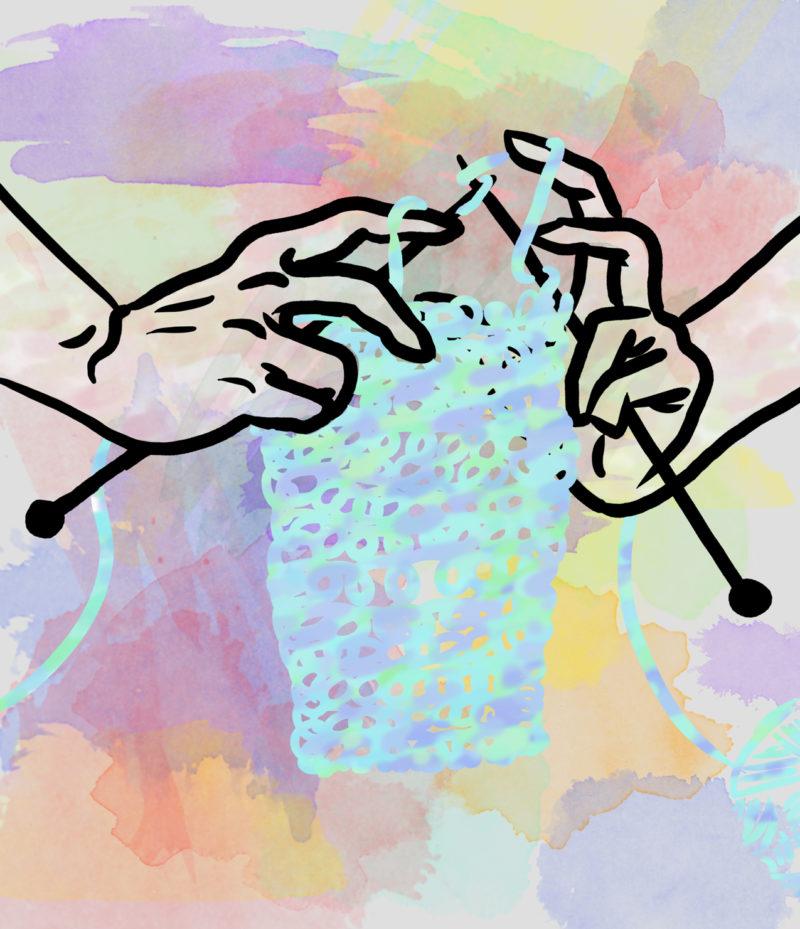With today’s advances in technology and neurological research, we can say with a great deal of confidence that the structure of your brain changes with the influences of the surrounding environment. The brain recovers and “˜rewires’ in response to mental and physical stress.
This is exactly why you should make art today.
The process of making art allows one to reorganize their thoughts. The doodles in the margins of your notes and the charcoal drawings you struggled over for your Drawing I class are all effectively reframing and reworking a previously held thought or experience. Making art is active and physically engaging. Who wouldn’t want to decrease stress, anxiety or mood disturbances?
Expressive Therapy is a relatively new and rapidly developing field in psychology. Clinical mental health therapists the world over are getting specializations in art, theater and music therapy to help patients that don’t get what they need out of traditional talk or physical therapy alone. The “˜adult’ coloring book trend brought a simplified version of expressive therapy into the mainstream and Target stores everywhere still sell intricate designs for people to complete in the medium of their choice.
Music is probably one of the easiest and most obvious ways to bring a dose of expressive therapy into your own life. Auditory stimulation is a potent factor in balancing emotions, reducing anxiety and even relieving pain. Some studies have shown that music actually calms neural activity in the brain. Messing around with a guitar or a $20 ukulele you bought on Amazon, or building the right wind-down playlist, can make all the difference.
In terms of reducing anxiety, songs that are 80 beats per minute or less, like Beyoncé’s “Halo,” are usually advised over something that is 120 beats per minute or higher, like Lady Gaga’s “Bad Romance.” A simple Google or Spotify search can provide entire playlists of songs with reduced tempos.
When you’re angry or sad, sometimes it’s easier to make pictures than it is to speak words. Art is a tool often used in therapeutic settings for combat veterans and abuse survivors, but it is equally therapeutic for the average college student.
Like keeping a journal, the process of re-articulating thoughts and ideas is cathartic and helpful when it comes to taking a step back and reevaluating a problem or a series of events. Whether you’re struggling to study for exams, stuck on a paper or having a falling out with a friend, there needs to be some sort of outlet for stress. Self-exploration is insight, and insight reduces copious personal stress.
Buy a $10 canvas at Michael’s. Mess it up and call it abstract art. Hang it over your bed as wall art. Buy a cheap sketchbook. Scribble lopsided faces and caricatures of your professors. Print out your favorite selfies and most-liked Instagram pictures. Collage them on a cork board or wallpaper your closet door with them. Join a knitting club. Write poetry that doesn’t rhyme. It’s all art.
It’s worth noting that making art can’t actually cure depression, anxiety, guilt, anger or other undesirable shifts in attitude, but it can serve as a tool to explore why the feelings exist while providing a healthier way to cope. Coping does not include quiet suffering, bottling up feelings, drinking, binge eating, skipping important school work or participating in self-destructive behaviors. Seeking professional help is always encouraged when mental and physical illness or copious stress and anxiety are preventing you from leading a full life.
College life requires an immense amount of social and physical engagement. We navigate hundreds of pages of reading and writing almost weekly while juggling extracurricular activities, Greek life, exams, friends and family, work and sometimes career decisions with nothing more than a few hours of sleep and a large amount of coffee. Art and music are therapeutic tools put to work by practicing therapists every day that can just as easily be put to work for you.







